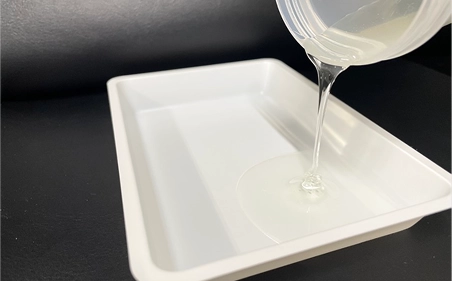Characteristics of Polyurethane (elongation, strength, shock absorption) and comparison with other materials
Characteristics of polyurethane
Polyurethane is a polymer obtained through the reaction of polyol and isocyanate, and is a material with excellent elongation, strength and shock absorption. There are a variety of types of polyurethane, from soft foam to tough elastomers, and both high elongation and durability can be achieved. Polyurethane has a high tensile and tear strength despite its light weight, and effectively absorbs shock and vibration so that it is suitable for cushioning materials and anti-vibration components. On the other hand, it is important to keep in mind the deterioration caused by UV rays and heat, and it is important to select an appropriate product in accordance with the conditions of use. In addition, because of good moldability, it is used in a wide range of fields including automotive parts and furniture. It is an indispensable material under environments requiring these properties.
*Please note that the values presented in this ranking are general guidelines only. Actual values may vary significantly depending on the manufacturer, specific grade, and formulation.
Comparison of polyurethane and other materials ① Elongation rate
Polyurethane is characterized by its high elongation while allowing a wide range of hardness designs. Compared to other elastomers, it has a elongation at break of about 300 to 700%, and it is superior in shock absorption and durability. On the other hand, EPDM and silicone rubber also achieve the same level of elongation, but it is important to balance with weather resistance and heat resistance depending on the application. In recent years , weather-resistant products have been developed, and it is possible to select products that can maintain high elongation at break under a variety of conditions.
The table compares polyurethane, EPDM rubber, silicone rubber, TPE and RLR in terms of percent elongation at break.
Polyurethane is characterized by both shock absorption and elasticity, EPDM by weather resistance, silicone by a wide temperature range, TPE by moldability and recyclability, and rubberlike resin by high elongation and strength. It is important to select the right product for the application and environment.
Polyurethane is characterized by both shock absorption and elasticity, EPDM by weather resistance, silicone by a wide temperature range, TPE by moldability and recyclability, and rubberlike resin by high elongation and strength. It is important to select the right product for the application and environment.
Comparison of polyurethane and other materials ② Tensile strength
Polyurethane is characterized by a wide range of elasticity and hardness adjustment while having a relatively high tensile strength (10 to 50 MPa). It is available in a variety of forms from foam to elastomer, and tends to provide both shock absorption and strength more easily than EPDM or silicone rubber, which are also elastic materials. There are also products with excellent weatherability and oil resistance, and they are widely used in automotive parts, industrial components, and other situations requiring strength and durability.
From the table, EPDM is attractive because it has high outdoor weather resistance, although the strength of EPDM is moderate, ranging from 7 to 21 MPa. Silicone rubber ranges from 2 to 15 MPa, but it provides stable performance over a wide temperature range.
TPE ranges from 5 to 30 MPa and provides excellent processability and recyclability and is characterized by high versatility. Rubberlike resin has both high strength and high elongation in the range of 6 to 30 MPa, and as a new material, it can take advantage of additional functions such as shock absorption and self-healing properties. It is important to select appropriately in accordance with the application and conditions of use.
TPE ranges from 5 to 30 MPa and provides excellent processability and recyclability and is characterized by high versatility. Rubberlike resin has both high strength and high elongation in the range of 6 to 30 MPa, and as a new material, it can take advantage of additional functions such as shock absorption and self-healing properties. It is important to select appropriately in accordance with the application and conditions of use.
Comparison of polyurethane and other materials ③ Shock absorption
Compared to EPDM and silicone rubber, polyurethane has superior resistance to temperature changes and oil resistance, and it is widely used in industrial applications. On the other hand, materials with extremely low resilience modulus and high loss factor, such as rubberlike resin, can be expected to provide stronger shock absorption and vibration damping, so it is important to select the right material for the application.
Comparison by loss factor (tanδ)
RLR (0.9) has an extremely large loss factor and is expected to have a particularly high vibration-damping effect. Polyurethane (0.1 to 0.3), EPDM (0.1 to 0.25), silicone (0.05 to 0.2) and TPE (0.15 to 0.35) have loss factors in the medium range. It is important to select materials that balance other properties such as elasticity and weather resistance depending on the application.Comparison by resilience modulus
RLR (4.5%) has a significantly lower resilience modulus and absorbs impact energy effectively. On the other hand, the resilience modulus of polyurethane (25-60%), EPDM (30-60%), silicone (30-50%) and TPE (30-70%) are relatively high and can provide both some elasticity and impact absorption. It is important to comprehensively consider the resilience modulus and other mechanical properties in accordance with the environment of use.【Summary】Comparison of polyurethane and other materials
Polyurethane (PU) has a relatively high level of tensile strength (10 to 50 MPa) and elongation at break (300 to 700%), and it can freely adjust the hardness and elasticity. It also has a loss factor (tanδ) of 0.1 to 0.3 and a resilience modulus of 25 to 60%. Therefore, it is widely used in industrial applications, as it is easy to maintain elasticity while having moderate shock absorption capacity. EPDM rubber (5-15 MPa, 300-600%) has excellent weather and heat resistance and is suitable for outdoor use. Silicone rubber (2-15 MPa, 100-700%) maintains performance over a wide temperature range and has good electrical insulation properties. TPE (thermoplastic elastomer: 5-30 MPa, 200-800%) has excellent processability and recyclability and is available in a wide range of hardness variations.
On the other hand, Rubber-Like Resin (6 to 30 MPa, 300 to 1,000%) has extremely high vibration damping performance with a loss factor of 0.9 and an extremely low repulsive modulus of 4.5%, which is characterized by its strong shock absorption and vibration damping effects. It also has excellent self-healing properties for scratches and weather resistance, and has a chemical structure that is resistant to hydrolysis. Therefore, it is expected to be reliable for long-term use. It will lead the best product design by comprehensive consideration of the characteristics and physical properties of each of these materials and their use in accordance with requirements such as tensile strength, elongation and impact absorption.
On the other hand, Rubber-Like Resin (6 to 30 MPa, 300 to 1,000%) has extremely high vibration damping performance with a loss factor of 0.9 and an extremely low repulsive modulus of 4.5%, which is characterized by its strong shock absorption and vibration damping effects. It also has excellent self-healing properties for scratches and weather resistance, and has a chemical structure that is resistant to hydrolysis. Therefore, it is expected to be reliable for long-term use. It will lead the best product design by comprehensive consideration of the characteristics and physical properties of each of these materials and their use in accordance with requirements such as tensile strength, elongation and impact absorption.
RLR (Rubber-Like Resin): A Revolutionary Material Combining High Tensile Strength and Elongation
Traditional resin materials have struggled to balance flexibility and durability. To overcome this challenge, we've developed Rubber-Like Resin (RLR), which combines rubber-like flexibility with exceptional durability.
This innovative material features superior elasticity and scratch resistance, while also providing excellent vibration absorption and chemical resistance. Since it cures at room temperature, no heating furnace is required—contributing to energy efficiency. RLR can be utilized across diverse applications, from electronic component coatings to construction materials and automotive parts.
This innovative material features superior elasticity and scratch resistance, while also providing excellent vibration absorption and chemical resistance. Since it cures at room temperature, no heating furnace is required—contributing to energy efficiency. RLR can be utilized across diverse applications, from electronic component coatings to construction materials and automotive parts.

Key Advantages of Rubber-Like Resin Compared to Urethane Materials





